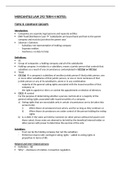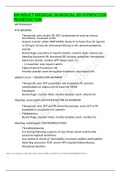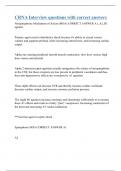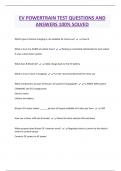Class notes
Consciousness Lecture notes: Intro To Psychology Part 2 (PSY1005S)
- Institution
- University Of Cape Town (UCT)
The notes focus on the topic of Consciousness in first-year psychology. The sub-topics include: Consciousness & sleep, sleep disorders, dreams, altered states and psychoactive drugs.
[Show more]











